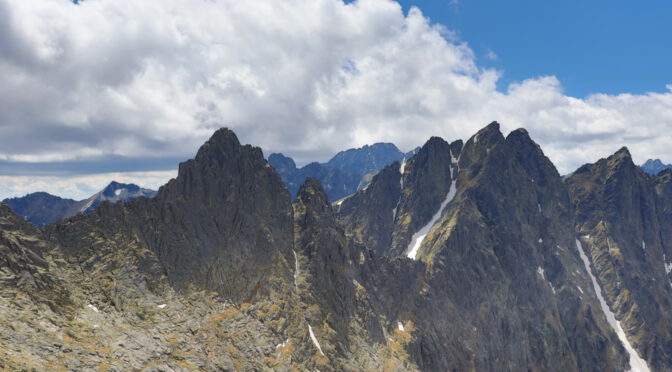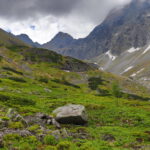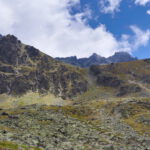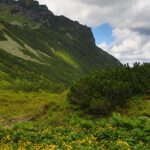Javorová dolina is an elongated valley in the north-eastern part of the High Tatras1 mountain range in Slovakia.
It is, like many other areas in the Tatranský národný park (TANAP), accessible for the general visitor during the summer season (June 15 to October 31).
A challenging mountain tour that takes a whole day is crossing the valley, traverse Sedlo sedielko (2376 meters), descend to the Téryho chata (2015 meters), walk through Malá studená dolina (“Small cold valley”) and end the hike in Starý Smokovec (1010 meters).
Javorová dolina, June 15
Though actually a small and remote settlement, the starting point Tatranská Javorina (1000 meters) is easily reachable by public transport. A bus from Poprad-Tatry or Tatranská Lomnica drives at least hourly every morning and the fare is moderate (about three Euros).
The trailhead has a green marking and lies next to the bus stop.
The tour’s first three hours are unspectacular from a mere mountaineering perspective. Of course the nature that unfolds in front of one’s eyes with the Belianske Tatry and the river Javorinka on the hiker’s left is an absolute delight.
After this first part is finished, the appearance of the valley changes rather abruptly to a more or less bleak, mossy and steep terrain with high mountains towering up menacingly in every direction.
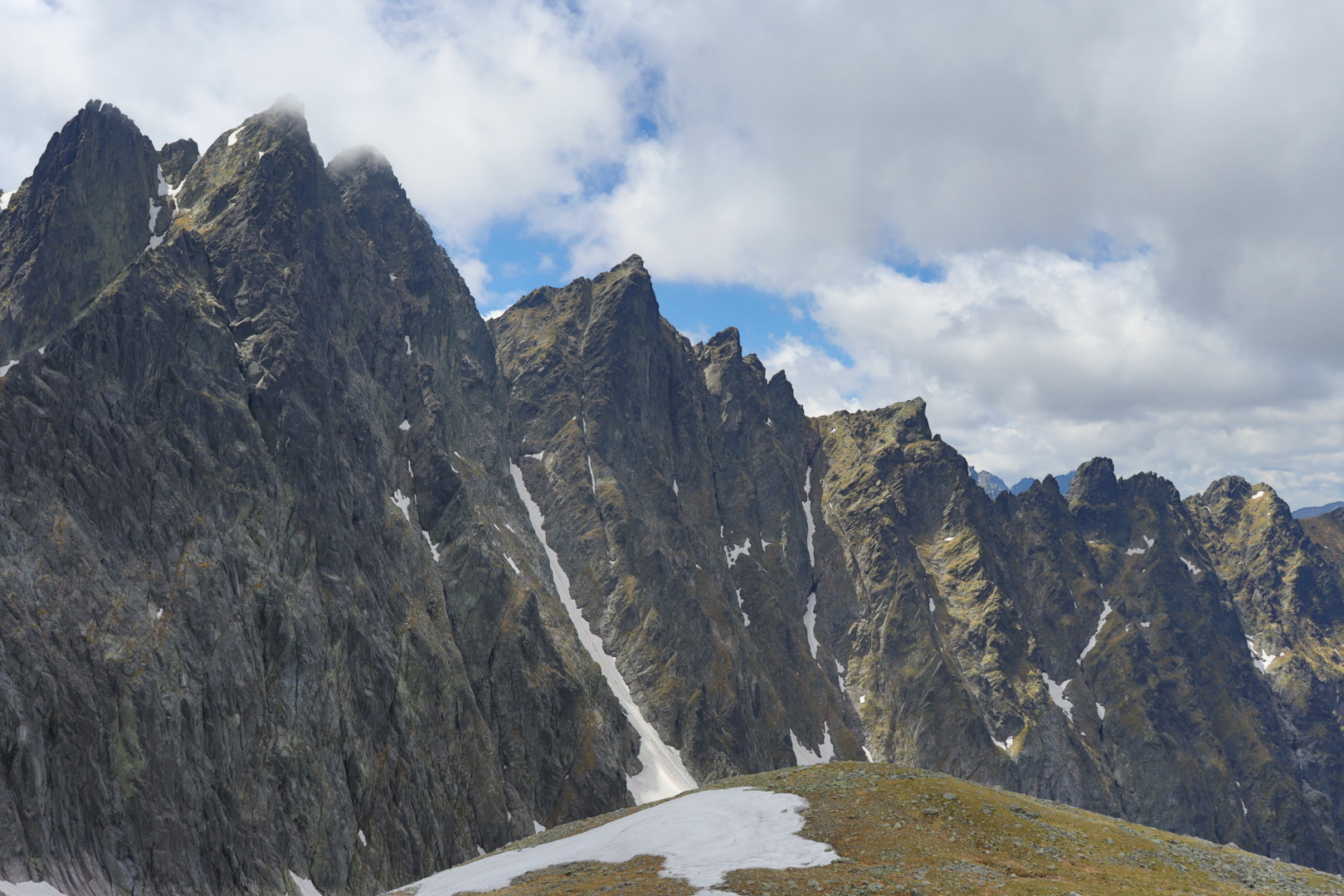
The question for me from this point was where will be first encounters with larger snowfields, a likely occurrence in the High Tatras in the early summer months.
I knew it for certain at Sedlo sedielko ultimately, after I had passed quite easily the handful of smaller snow piles that obstructed my way up to the actual mountain saddle.
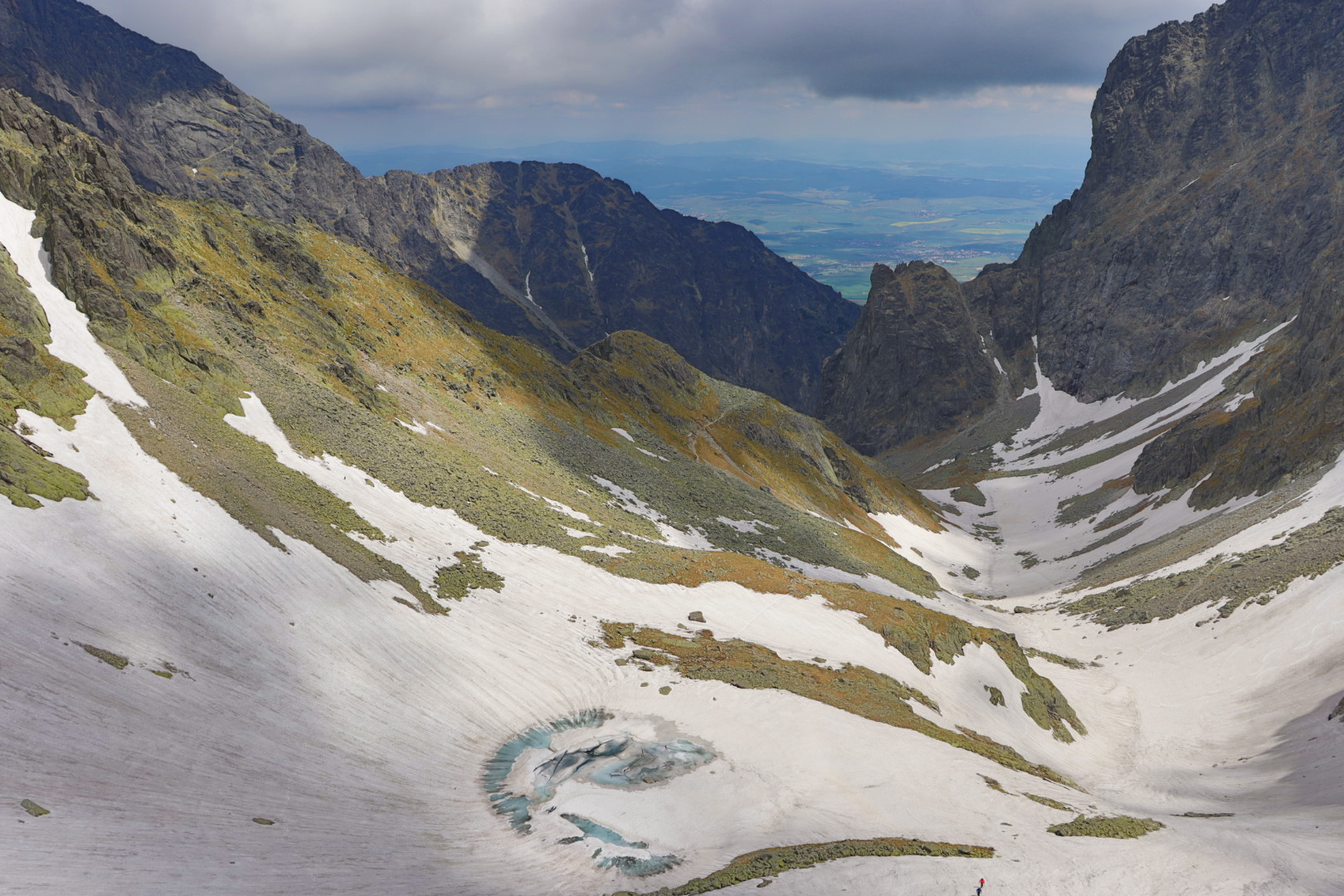
The whole precipice was covered with a thick, wet and ominously looking white mass all the way down to Modré pleso (“Blue mountain lake” or “Blue tarn2 “) on 2189 meters.
Turning back was not really an option, so I had no other choice than to put my crampons on, fetch the ice axe and climb down in “free solo” style the first hundred-odd meters.
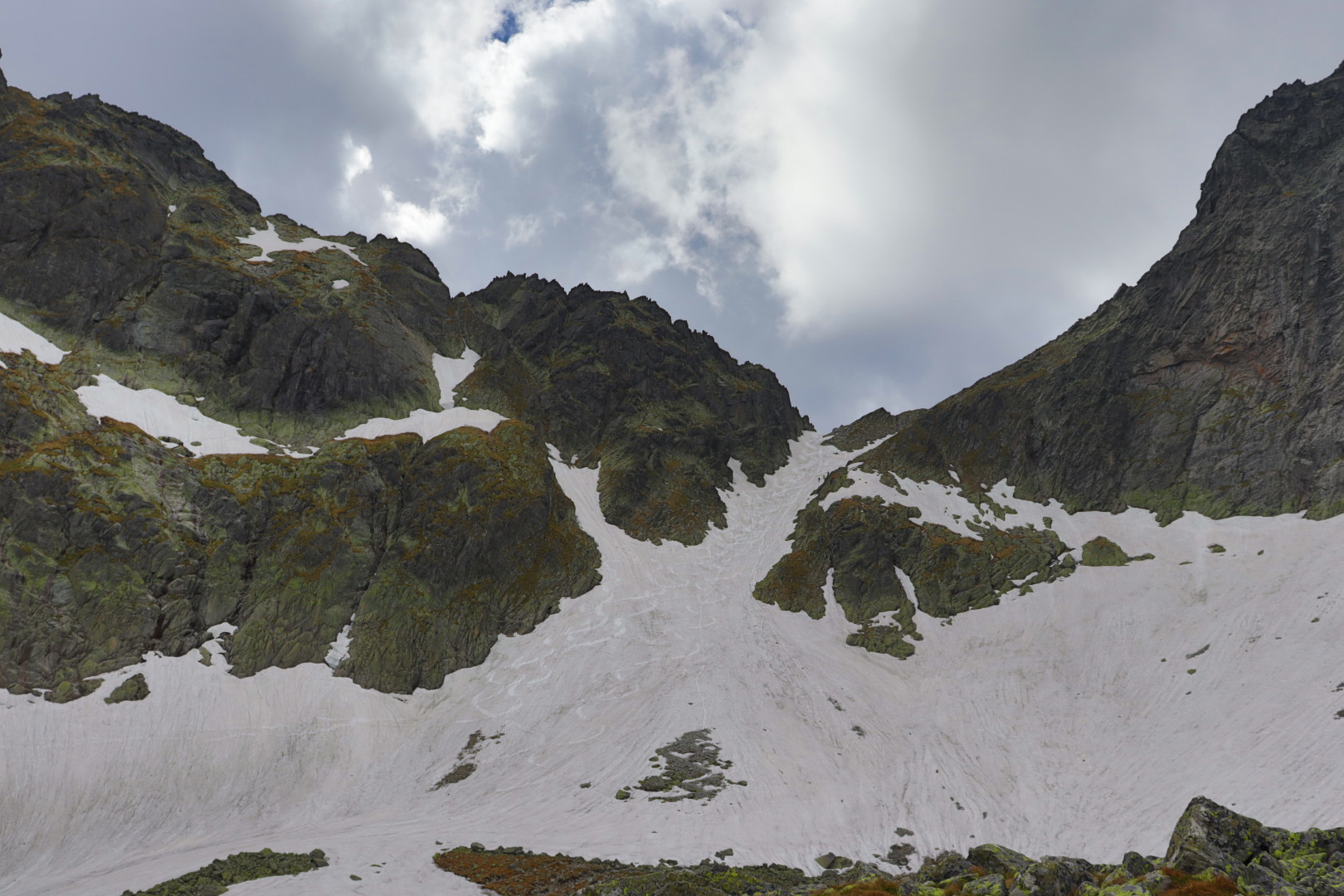
After this I was was able to push forward more quickly for the slope flattened out a little, but I needed one and a half hours to cover the distance between Sedlo sedielko and the Téryho chata (what usually takes less than half the time).
Descending from the Téryho chata to Starý Smokovec is the familiar and easy part. Actually, as this section is open all year round, I did not have to deal with any suspicious snow field and could relax and enjoy the nature in the Malá studená dolina.
An alternative hike from Tatranská Javorina in case weather is bad is a blue marked trail through the valley Zapadné Meďodoly along the foothills of the Belianske Tatry.
1 notes, footnotes and references about translations apply for this article in the same manner as for the other blog-posts about the High Tatras on this website
2 a tarn is a mountain lake formed in a so-called cirque; hence every tarn is a mountain lake, but not every mountain lake a tarn; for example, Štrbské pleso is not a tarn (it is a glacial lake) but Veľké Hincovo pleso is a tarn (even the largest in Slovakia)
Featured image: Hrebeň Javorových veží (“Ridge of Maple Towers”)
